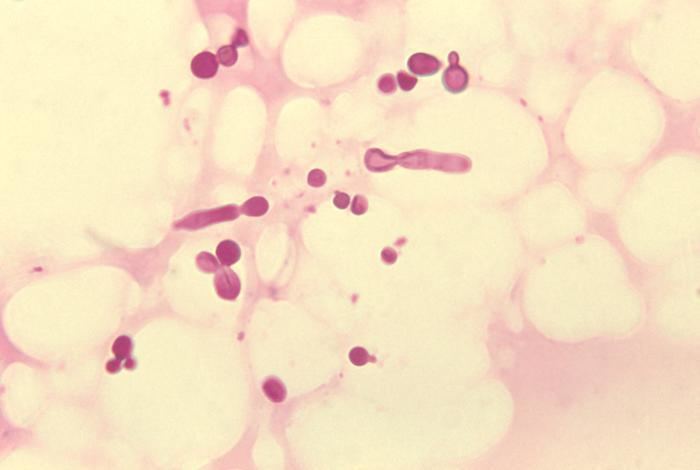Kingdom Fungi Order Malasseziales Scientific name Malassezia Rank Genus | Division Basidiomycota Family Malasseziaceae Higher classification Malasseziaceae | |
 | ||
Similar Pityriasis versicolor infection, Trichophyton, Microsporum, Epidermophyton, Malassezia pachydermatis | ||
Malassezia (formerly known as Pityrosporum) is a genus of fungi. Malassezia is naturally found on the skin surfaces of many animals, including humans. In occasional opportunistic infections, some species can cause hypopigmentation or hyperpigmentation on the trunk and other locations in humans. Allergy tests for this fungus are available.
Contents
Nomenclature
Due to progressive changes in their nomenclature, some confusion exists about the naming and classification of Malassezia yeast species. Work on these yeasts has been complicated because they require specific growth media and grow very slowly in laboratory culture.
Malassezia were originally identified by the French scientist Louis-Charles Malassez in the late 19th century. Raymond Sabouraud identified a dandruff-causing organism in 1904 and called it "Pityrosporum malassez", honoring Malassez, but at the species level as opposed to the genus level. When it was determined that the organisms were the same, the term "Malassezia" was judged to possess priority.
In the mid-20th century, it was reclassified into two species:
In the mid-1990s, scientists at the Pasteur Institute in Paris, France, discovered additional species.
Currently there are at least 14 recognized species:
Role in human diseases
Identification of Malassezia on skin has been aided by the application of molecular or DNA-based techniques. These investigations show that the Malassezia species causing most skin disease in humans, including the most common cause of dandruff and seborrhoeic dermatitis, is M. globosa (though M. restricta is also involved). The skin rash of tinea versicolor (pityriasis versicolor) is also due to infection by this fungus.
As the fungus requires fat to grow, it is most common in areas with many sebaceous glands: on the scalp, face, and upper part of the body. When the fungus grows too rapidly, the natural renewal of cells is disturbed and dandruff appears with itching (a similar process may also occur with other fungi or bacteria).
A project in 2007 has sequenced the genome of dandruff-causing Malassezia globosa and found it to have 4,285 genes. M. globosa uses eight different types of lipase, along with three phospholipases, to break down the oils on the scalp. Any of these 11 proteins would be a suitable target for dandruff medications.
M. globosa has been predicted to have the ability to reproduce sexually, but this has not been observed.
Numbers
The number of specimens of M. globosa on a human head can be up to ten million.
Treatment of symptomatic scalp infections
Symptomatic scalp infections are often treated with selenium disulfide or ketoconazole containing shampoos.
There are several natural antifungal remedies for seborrhoeic dermatitis including garlic, onion, tea tree oil (Melaleuca oil), honey, and cinnamic acid.
Used occasionally and diluted with water, low-concentration hydrogen peroxide (approximately 3%) sold over the counter at pharmacies is also used to manage dandruff-like symptoms and itching. However, hydrogen peroxide treatment can cause scarring if the solution is not washed off after a short treatment (5 minutes or less is sufficient). Hydrogen peroxide diluted 50-50 with tap water in a foot bath is also effective in prompt removal of Malassezia fungi of the feet (these being the cause of "toe cheese" - as the Flemish call it).
